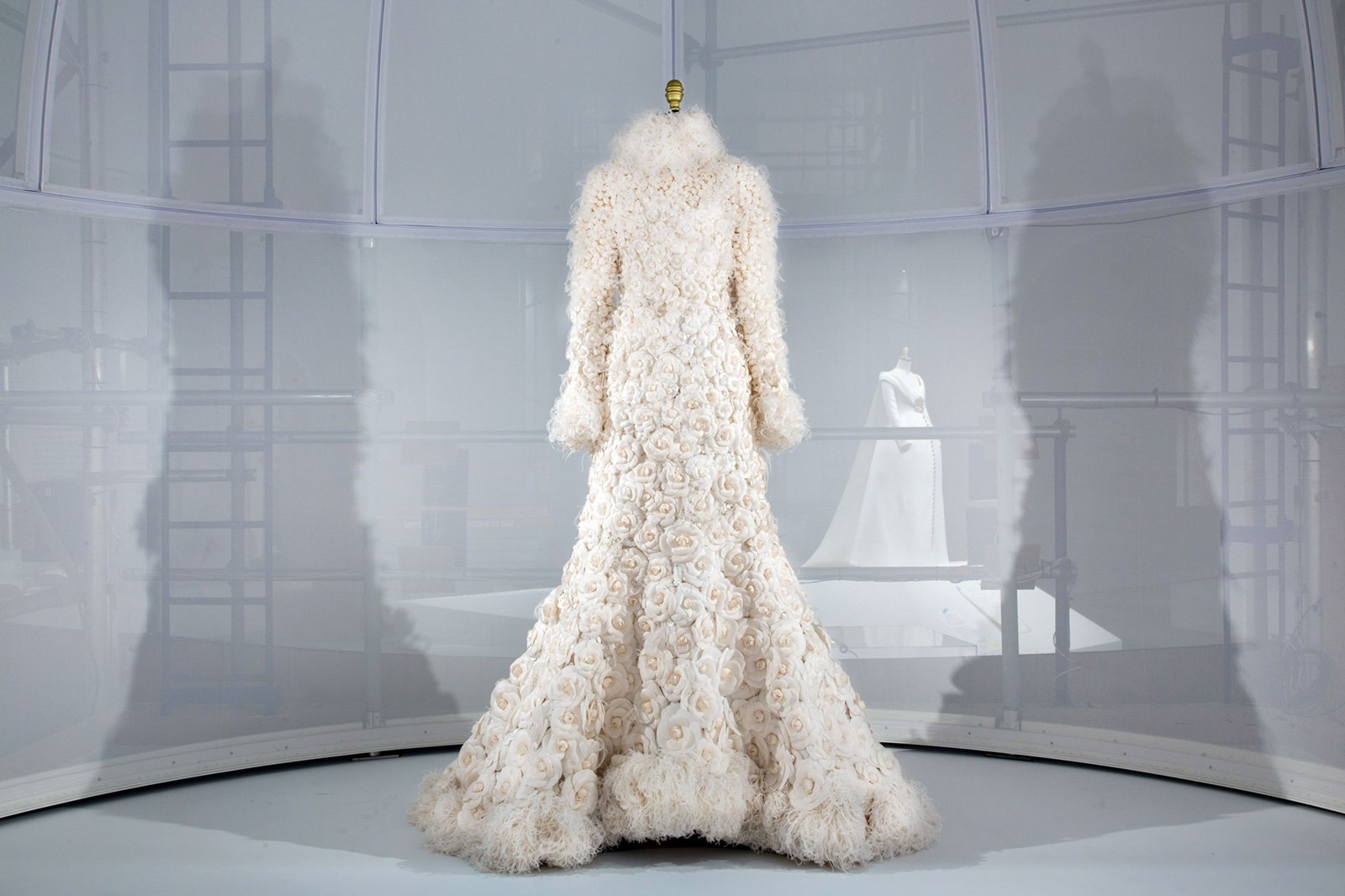What are the assumptions tied to the manmade and the technological? And is it possible to delineate these, to break down the values assigned to them – particularly within regard to the realm of fashion? These are the central questions raised by The Costume Institute’s new exhibition, Manus x Machina, which previewed to the press and of course, the global glitterati, at the Met this past Monday; questions that the show seeks to dissect through some 150-plus “case studies.” The exhibition, curated by Andrew Bolton, explores the development of haute couture and prêt-à-porter pieces in an age where tech, whether we’re comfortable with it or not, is a living breathing figure in the clothes making (couture included) process.
Manus x Machina is a beautiful exhibition; it is bare bones, stripped to showcase just the dress, and nonlinear in structure. Rather than arranged by chronology or hierarchy, it is organized by the guidelines of dressmaking (the sections are embroidery, artificial flowers, featherwork, leatherwork, lacework, and pleating) provided by Denis Diderot’s 18th-century Encyclopedia of the Sciences, Arts and Crafts. The overarching conclusion? That a separation between manmade and machine-made – in construction, but also in prescribed value – doesn’t exist. Rather, as Bolton was quick to suggest, “[the exhibition] suggests a spectrum of practice whereby the hand and the machine are equal protagonists in solving design problems, enhancing design practices, and ultimately, advancing the future of fashion.” Thus, here is what to expect from the extraordinary and challenging endeavor...
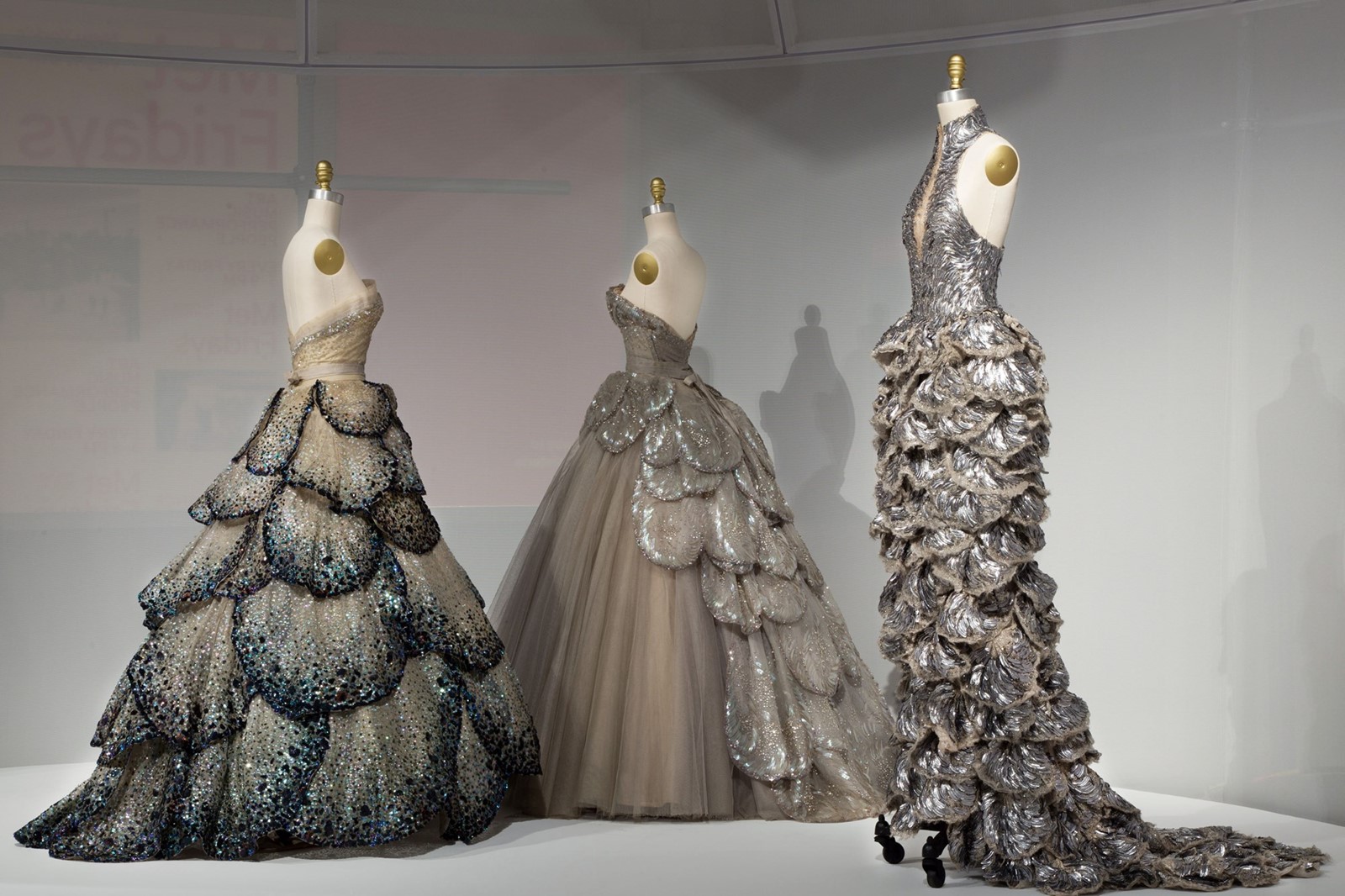
Construction is everything
As mentioned, the exhibition is organized by métiers of construction. There’s a section dedicated to leather that includes the futuristic, laser-cut bonded patent-leather fantasies of Iris van Herpen’s creation (from Spring 2015) and Alexander McQueen’s laser-cut white pony skin bonded to black leather and hand-finished with Mongolian wool (by Sarah Burton, Autumn/Winter 2012); there are rooms exploring pleating filled with garments from Issey Miyake’s fabulously experimental Jun Mitani-inspired, computer modeled 2D to 3D collection. There are wonders of artificial flower construction, like Yves Saint Laurent’s haute couture bridal bouquet dress made of handmade pink silk flowers and worn by Laetitia Castia in his memorable Spring/Summer 1999 show; lengthily constructed, machine sewn, hand-embroidered gowns from Dior (couture 2012, with sequins, clear bugle beads, and crystals delicately attached) in an embroidery section; fabulous examples of featherwork (see a bountiful Givenchy couture 1966 creation, complete with hand glued white and brown ostrich feathers); and even an 1870 Irish wedding dress, hand-crocheted in three-dimensional motifs. The details and analysis of individual garment construction are marvellous, and thoroughly illuminating.
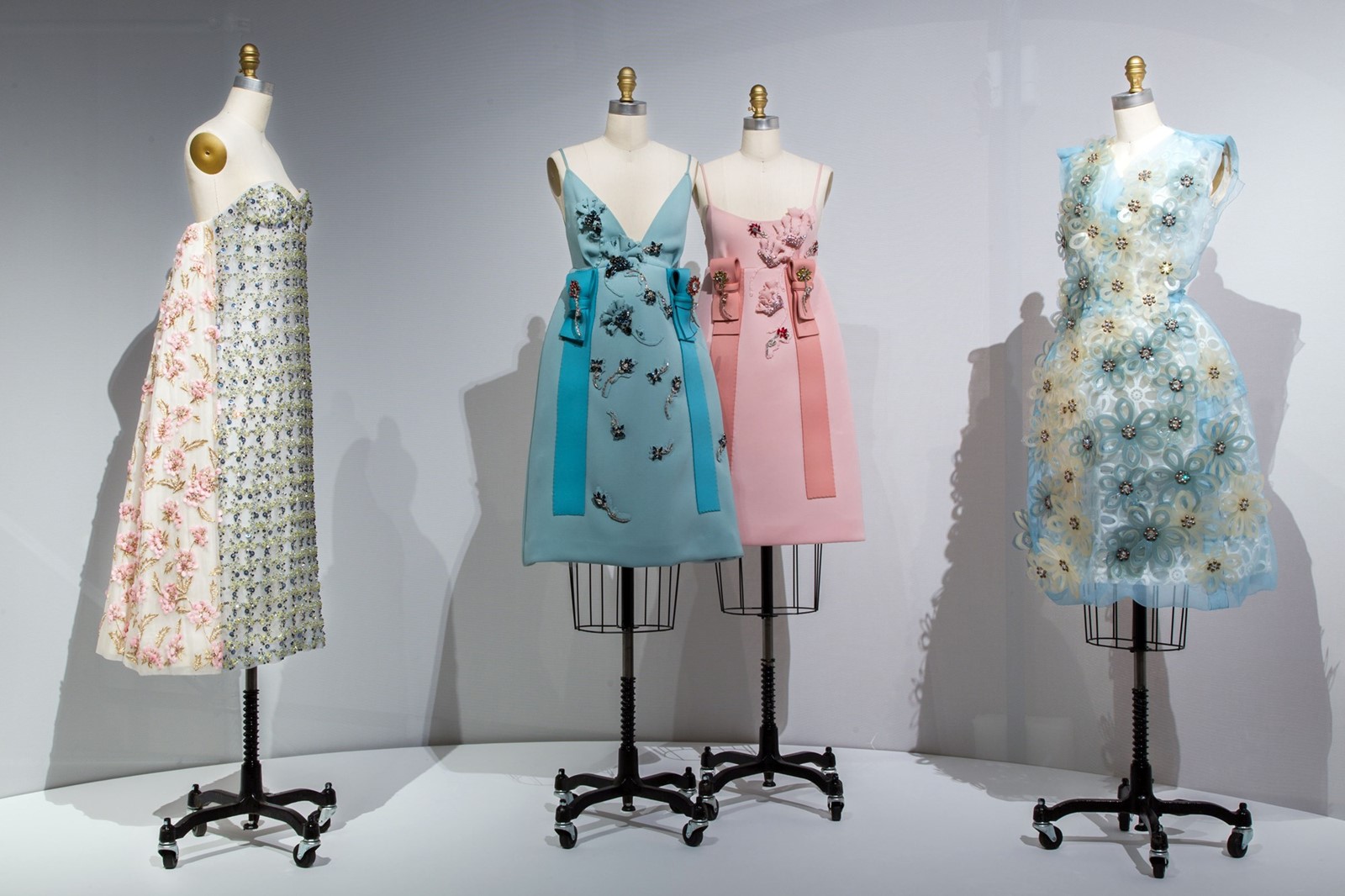
Materials are unexpected
Many of the most fascinating pieces on view challenge the read of the naked eye – take Simone Rocha’s Spring/Summer 2014 “wet lace dress”, for instance. “This dress was originally inspired by the wet Irish Sea,” stated the designer in the exhibition notes. “I wanted to create a ‘wet’ lace, so it felt like a second skin on the body. I used a fabric that is a mix of nylon and polyester, which I laminated with a polyurethane foil. Then I placed the frills falling away from the body, feeling deconstructed, as if nature placed them there falling from the hip.” The gown, which looks like ancient silk lace dipped in the rough ocean, is a stunning mix of tech and hand. It’s one of quite a few.

Functionality meets beauty
Before joining as a sponsor, Apple’s Jony Ive spoke with Anna Wintour and Bolton about the purpose of the exhibition. “I was particularly intrigued that it would stimulate a conversation exploring the relationship between what is made by hand and what is made by machine, that it would challenge the preconception of some that the former is somehow inherently more valuable than the latter,” he mused at the Met preview on Monday morning. “In the design team at Apple, we do share some similar preoccupations and goals with the designers whose work you will see here today. Many of us I think believe in the poetic possibility of the machine, while in equal measure we have tremendous respect and admiration for what is made by hand. Our goal has always been to try to create objects that are as beautiful as they are functional, as elegant as they are useful.”
Accordingly, Manus x Machina isn’t just about method – take the central piece in the exhibition. It’s a stunning, gold metallic pearl and gemstone embroidered wedding maternity dress from Lagerfeld’s Autumn/Winter 2014 Chanel couture collection. Bolton noted that the train of the gown took some 450 hours of workmanship to craft. Several guests at the preview emphasized their enthusiasm for the sheer visual splendor of the work; there were pieces from almost current seasons that they had never seen in person before.
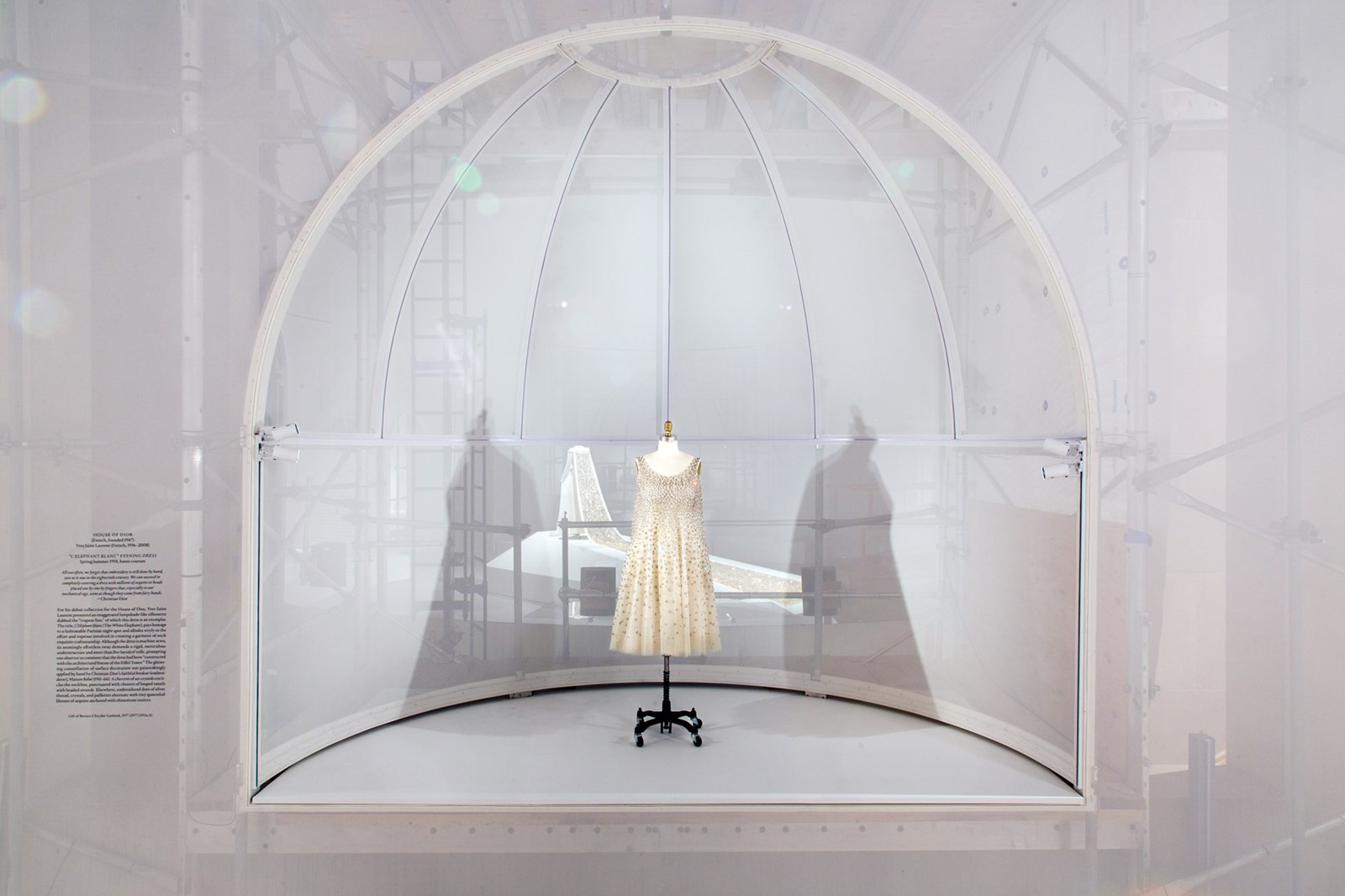
Man and Machine are divided, then united
Throughout the exhibition, the illustration of the complex, nuanced relationship between hand and machine is unwavering. There are machine-sewn, heat-molded design icons (Pierre Cardin’s 1968 Cardine dress, for which he had to make a new mold for each creation), a machine-sewn twill dress, hand-painted and hand-sculpted with magnets (Iris van Herpen’s Autumn/Winter 2013 couture), and molded gowns meticulously embroidered by hand. And just as the manmade and machine-crafted are conflated, you’ll have to take a hard look to find a differentiation between ready-to-wear and couture in the show.
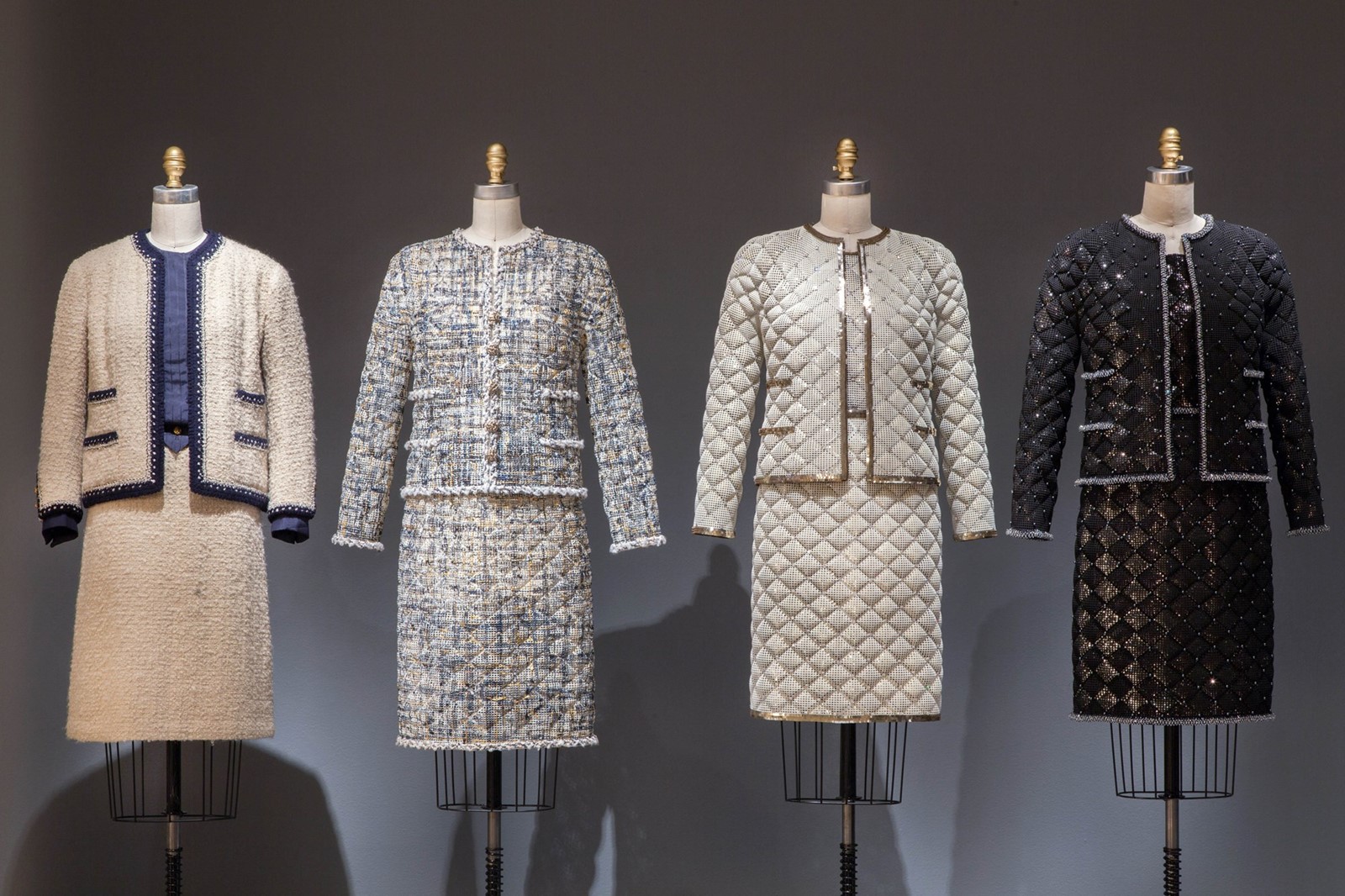
The icons unite with the new guard
Throughout the exhibition you’ll find the greats – gowns from seminal collections of Cristobal Balenciaga, Yves Saint Laurent, Christian Dior, etc. – but you’ll also find the new. There is 3D printing by Christopher Kane (see: the A/W13 Frankenstein offering), a collection of looks from recent Proenza Schouler show, and sculptural, striking millinery objects by young Japanese designer Maiko Takedo. “The convergence of the handmade and the machine-made in both the haute couture and the prêt-à-porter not only challenges traditional assumptions about both institutions, but also, perhaps more importantly, pushes the potential of fashion in previously unforeseen and unimaginable directions,” said Bolton. With both, we can hope to “create fashions of exceptional originality.”
Manus x Machina is at The Met until August 14, 2016.
